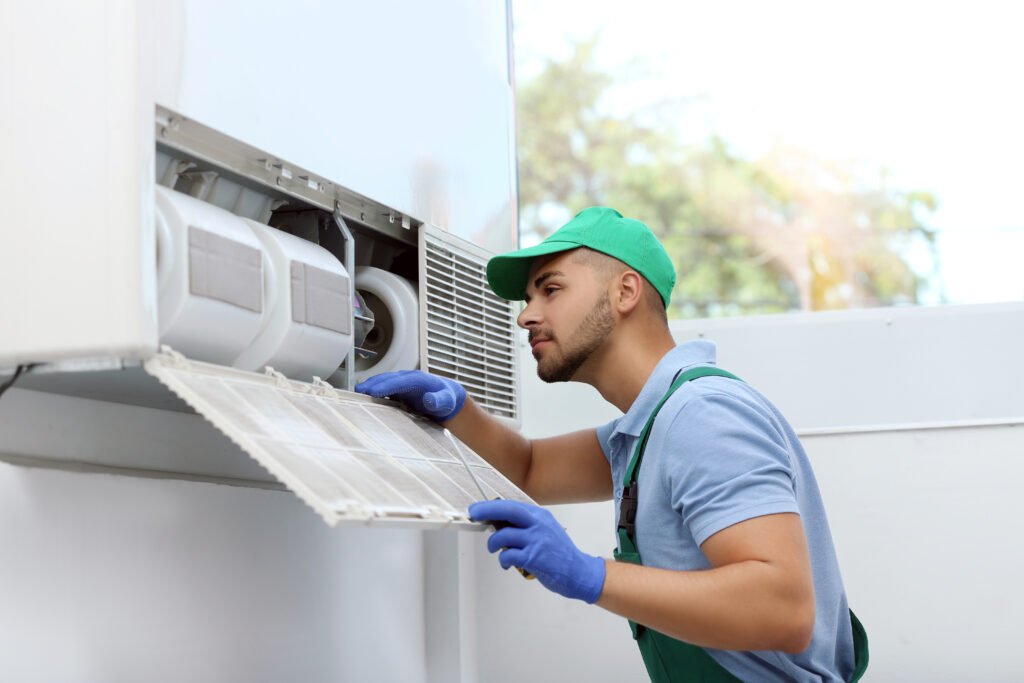As outdoor temperatures rise, staying cool indoors becomes a top priority for homeowners. Window air conditioning units have long been a go-to solution for budget-conscious households. Still, they often fall short regarding whole-home comfort, energy efficiency, and long-term performance.
Upgrading to a central air conditioning system can dramatically change how you experience summer, providing even cooling throughout the house, better humidity control, and a quieter indoor environment. Making the switch involves planning, budgeting, and understanding the structure of your home’s HVAC capabilities, but the result is a more comfortable and energy-efficient living space.
Key steps involved in transitioning to central air
Evaluating Your Home’s Infrastructure and Cooling Needs
The first step in upgrading from window units to central air involves evaluating your home’s infrastructure. Central AC systems rely on ductwork to deliver conditioned air to each room, so it’s essential to determine whether your home already has ducts in place. Homes with forced-air heating typically have ductwork that can be repurposed, though it may still require cleaning or modifications.
In homes without any existing duct system, installing one can be more involved and may require ceiling, attic, or wall work. A thorough assessment also includes evaluating insulation, square footage, sun exposure, and airflow patterns, all affecting the system’s size and placement. Properly sizing the central AC system ensures it performs efficiently without overworking or short cycling, which can reduce lifespan and increase utility costs.
During this stage, homeowners often seek a consultation to understand options and map out the logistics for seamless air conditioning installation that aligns with their layout and goals.
Choosing the Right System for Long-Term Comfort
After evaluating your home’s structure, the next step is selecting the right central AC unit. There are various types of systems, including traditional split systems, packaged units, and ductless mini-splits. Each option has distinct benefits based on layout, climate, and homeowner preference.
A conventional central air system with a condenser unit outside and an evaporator coil inside is the most common for full-house cooling. It connects to the existing or newly installed ductwork and includes a thermostat for temperature control. Homeowners should also consider energy efficiency ratings, such as SEER (Seasonal Energy Efficiency Ratio), which indicates how well the unit uses electricity to cool the space.
A higher SEER rating may cost more upfront, but saves money in the long run through lower energy bills. Choosing the right system balances cost, performance, and future maintenance, making it a crucial step in the upgrade process.
Understanding Installation Logistics and Timeline
Once a central AC system has been selected, the installation process begins. This includes several phases such as equipment delivery, removal of old units, ductwork modifications, electrical upgrades, and system integration. Installation might take just a few days for homes with existing ducts, depending on the condition and layout. Homes without ducts can expect a longer timeline due to the construction work required.
In both cases, installers will likely need access to attics, crawlspaces, or basements to route components and ensure proper airflow. Electrical upgrades may be required if the home’s current panel doesn’t support the power demands of a central system. Coordination with certified professionals ensures each step is completed safely and according to building codes.
Temporary disruptions may include indoor noise, open walls or ceilings, and outdoor activity, but installers aim to minimize the impact as much as possible during the transition.
Enhancing Energy Efficiency Through Smart Integration
Upgrading to central AC opens the door to better energy efficiency, especially with modern smart home technology. Thermostats with Wi-Fi capabilities allow homeowners to control cooling remotely and set detailed schedules based on their daily routines.
Zoning systems can be installed to direct cooling to specific areas, reducing energy waste and increasing comfort in occupied rooms. Sealing and insulating ductwork further reduces the loss of conditioned air and improves overall performance.
During installation, it’s also a good time to assess windows, door seals, and attic insulation, all contributing to energy retention. These upgrades work together to lower long-term cooling costs and reduce strain on the new system. Combining central AC with energy-saving features ultimately transforms the home’s climate control and energy profile.
Transitioning from Operation to Maintenance
After installation is complete and the system runs, the focus shifts to ongoing care. A central air system requires routine maintenance to keep it performing efficiently. This includes changing filters regularly, inspecting ducts for leaks, cleaning condenser coils, and checking refrigerant levels. Many homeowners sign up for annual maintenance programs offering scheduled service visits and performance checks.
Having professionals monitor the system ensures minor issues are addressed early before they escalate into expensive repairs. Understanding how to use the thermostat correctly and when to adjust settings also contributes to the system’s longevity. This proactive approach to maintenance helps protect the investment made during installation and ensures the central AC continues to provide comfortable, reliable cooling year after year.
A Cooling Upgrade Worth the Effort
Switching from a window unit to central air is more than just a mechanical upgrade—it’s a lifestyle improvement that enhances your home’s comfort, efficiency, and resale value. Though the process involves careful planning, installation logistics, and financial investment, the results are substantial. Even cooling, quieter operation, and smart integration make everyday life more enjoyable during the hottest months.
Central air also improves indoor air quality and reduces the clutter and noise of multiple window units. As homeowners look for lasting solutions to beat the heat, central AC systems remain a powerful option that pays off in comfort and cost savings over time.
